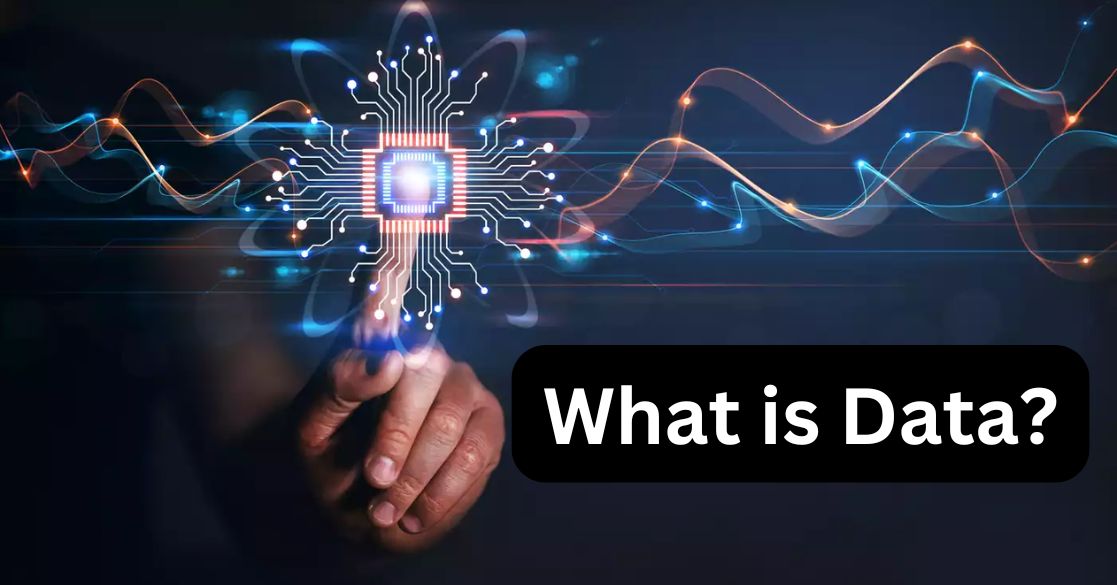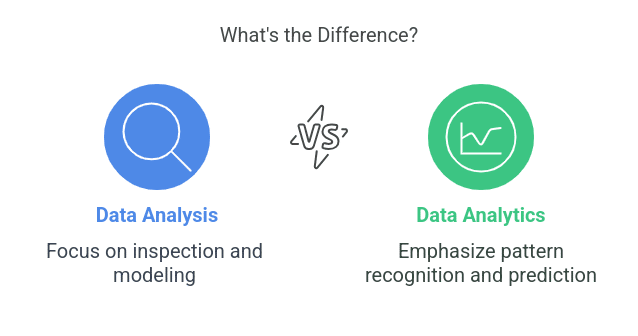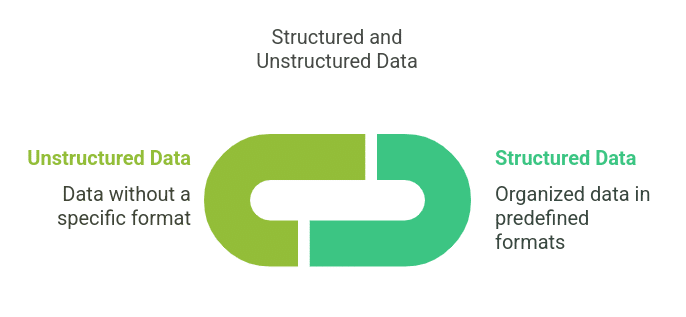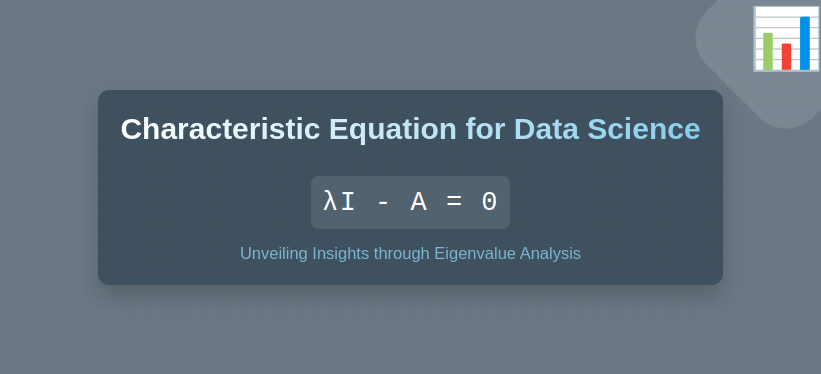Data is the lifeblood of the modern digital age, driving innovation, decision-making, and growth across industries. By 2025, the global data volume is expected to reach an astonishing 182 zettabytes, highlighting its exponential growth and increasing relevance.
Organizations are leveraging this massive influx of information to gain insights, with 61% of companies actively using big data analytics to improve efficiency and customer experiences.
From healthcare and finance to entertainment and education, data plays a pivotal role in shaping strategies, predicting trends, and solving complex problems. Its ubiquity is further amplified by the rise of over 75 billion connected IoT devices, which continuously generate streams of valuable information.
This article explores the definition, types, and significance of data in today’s digital world, highlighting its critical role in shaping our future.
Definition of Data
Data refers to raw facts, figures, or symbols that can be processed and analyzed to extract useful information. It can exist in various forms, including numbers, text, images, and sounds. In computing, data is often stored in structured or unstructured formats, ready to be manipulated for specific purposes.

When data is processed and analyzed, it transforms into information, which provides meaningful insights for decision-making.
Classification of Data
Data can be classified into several categories based on its nature and structure. The primary classifications include:

1. Structured Data
Structured data is organized and stored in a predefined format, typically within databases. It follows a specific schema, making it easy to search, retrieve, and analyze. Examples include:
- Relational databases (MySQL, PostgreSQL)
- Spreadsheets (Excel, Google Sheets)
- Customer information (Name, Age, Address)
2. Unstructured Data
Unstructured data lacks a specific format and does not fit neatly into traditional databases. It includes various types of content that require advanced processing techniques like Natural Language Processing (NLP) and Machine Learning (ML) to derive insights. Examples include:
- Emails and chat messages
- Social media posts
- Images, videos, and audio files
Understand the difference between Structured and Unstructured Data and how they impact data management, analysis, and decision-making.
3. Semi-Structured Data
Semi-structured data falls between structured and unstructured data. It has some organizational properties but does not conform to a rigid structure. Examples include:
- JSON and XML files
- Log files
- Sensor data
4. Big Data
Big data refers to massive volumes of data that are complex and challenging to process using traditional methods. It is characterized by the 3Vs:
- Volume – Large amounts of data generated every second
- Velocity – High-speed data generation and processing
- Variety – Different types of data (structured, unstructured, semi-structured)
Big data technologies such as Hadoop and Apache Spark help manage and analyze this vast information.
5. Open Data vs. Closed Data
- Open Data: Freely available data for public use (e.g., government reports, research datasets)
- Closed Data: Restricted data with access controls (e.g., private business records, confidential customer details)
To learn this in detail, explore the types of data and understand their role in data analysis.
Importance of Data
Data is essential in various fields, influencing decision-making and innovation. Here’s why data is crucial:

1. Decision-Making
Organizations rely on data to make informed decisions. Data-driven decision-making helps businesses optimize operations, improve customer satisfaction, and enhance efficiency.
2. Business Growth and Market Analysis
Companies use data analytics to understand market trends, customer behavior, and competitor strategies. Insights from data allow businesses to develop targeted marketing campaigns and increase revenue.
3. Scientific Research and Development
Scientists use data to validate hypotheses, conduct experiments, and discover new knowledge. Research in fields like medicine, climate science, and artificial intelligence heavily depends on data analysis.
4. Artificial Intelligence and Machine Learning
AI and ML models require vast amounts of data for training and improving their accuracy. The quality and quantity of data significantly impact the performance of AI-driven applications.
5. Enhancing Cybersecurity
Cybersecurity systems analyze data patterns to detect anomalies and prevent cyber threats. Data security and privacy are vital for protecting sensitive information from cyberattacks.
6. Personalized User Experience
Streaming platforms like Netflix and e-commerce websites like Amazon use data to recommend personalized content and products based on user behavior.
How Do We Analyze Different Data?

- Quantitative Data: Analyzed using statistical techniques such as mean, median, standard deviation, and regression analysis. These methods help identify patterns, trends, and correlations in numerical datasets.
- Qualitative Data: Examined through content analysis, thematic analysis, or coding to identify patterns and themes. This approach helps interpret behaviors, motivations, and contextual insights.
- Time-Series Data: Processed using trend analysis, seasonal decomposition, and forecasting models. Since it consists of sequential data points over time, it is useful for predicting future trends.
- Cross-Sectional Data: Represents a single snapshot in time and is analyzed using methods like t-tests or correlation analysis. It helps identify relationships between variables at a specific moment.
- Big Data: Requires advanced techniques such as machine learning, clustering, and data mining to process vast and complex datasets. Insights are derived through high-performance computing and parallel processing.
- Metadata: Analyzed using metadata management tools to improve data organization, classification, and retrieval. It provides insights into the structure, source, and attributes of other datasets.
These methods enable efficient and insightful analysis tailored to each data type.
Challenges in Data Management
Despite its benefits, handling data comes with challenges:

- Data Quality Issues: Inaccurate or incomplete data can lead to misleading conclusions.
- Data Privacy and Security: Protecting sensitive information from breaches is a major concern.
- Storage and Processing: Managing large volumes of data requires robust infrastructure and computing power.
- Compliance Regulations: Adhering to data protection laws such as GDPR and CCPA is crucial for organizations.
Future Trends in Data Management
The future of data is evolving with new advancements:

- Edge Computing: Reducing latency by processing data closer to the source.
- Blockchain for Data Security: Enhancing data integrity and preventing tampering.
- AI-Driven Data Analysis: Automating insights extraction and decision-making.
- Quantum Computing: Revolutionizing data processing capabilities.
Conclusion
Data is a critical asset in the digital age, driving innovation, decision-making, and technological advancements. Understanding different types of data and their significance helps organizations and individuals leverage their potential effectively. As technology evolves, data will continue to shape industries and transform the way we interact with the world.
Master Data Science and Machine Learning in Python with expert-led lessons, real-world case studies, and hands-on projects to build job-ready skills in predictive modeling, feature engineering, and data analysis.
Frequently Asked Questions(FAQ’s)
How is data different from information?
Data refers to raw, unprocessed facts and figures, while information is processed data that provides meaning and context for decision-making.
What are the different sources of data collection?
Data can be collected from various sources, including surveys, sensors, social media, business transactions, and web scraping.
Also Read: What is Data Collection?
What is metadata, and why is it important?
Metadata is data that describes other data, such as file size, creation date, or author details. It helps in organizing, searching, and managing data efficiently.
What is the role of data governance?
Data governance involves policies and processes to ensure data quality, security, and compliance with regulations like GDPR and CCPA.
What is real-time data processing, and where is it used?
Real-time data processing refers to analyzing and acting on data instantly as it is generated. It is used in stock trading, fraud detection, and IoT applications.









